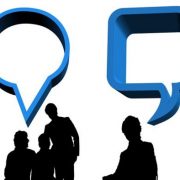The Courage to Close
People get funny about closing negotiations, deals, interviews, meetings, etc. Nerves take over, body language changes and confidence erodes. Why is this? I’ll tell you…it’s because closing is inorganic for most people. It feels forced. And that should never be the case.
When it feels uncomfortable for you to close it’s likely because you have not banked enough comprehension of your client’s situation. And yet, you are about to make a recommendation and convince them that your advice is sound. If you are nervous about that, then guess what…it probably isn’t sound!
Gain the Momentum to Close
Closing represents the next step in the momentum you’ve built with your audience. Throughout the course of your interaction, if you’ve been listening well and asking the right, researched probing questions (which you’ve prepared in advance!), then momentum is on your side. But if you collapse the whole process into a mostly one-sided conversation in which you are doing most of the talking, there is no momentum. It’s like you are driving the car and your passenger (your audience) has no idea where you are going. So when you get there, they are confused instead of assured that they are in the right place.
Sell Into the Future…Their Future
You got the meeting because they have some modicum of interest in what you are presenting, right? So, knowing that, you have to find out what that interest is. And ALL of the time their interest is about the future. They have a problem and they need it solved so that their future doesn’t have that problem in it. For example….
A client recently was having issues with one of her managers who, we discovered, the team felt was quite dour and needed to lighten up to relate to his directs and clients. He always needed to be an expert on everything, which was off-putting. That was the problem. What I had to see was how fixing this problem could create a much different future for my client. If her world didn’t include having to deal with the blowback from this manager’s behavior, what would that free her up to accomplish. Once we both were aligned with that future, we could move forward together solving the issue. This future-seeing isn’t the stuff of crystal balls…it takes listening, understanding and affirmation.
Closing is Helpful to Your Clients
At the point of close, here is what you are doing…you are offering a solution to what your client has communicated to be a problem. In other words, you are helping! So, don’t be nervous about that. You’ve gathered their testimony, you’ve affirmed their position, you’ve asked insightful questions that elicited more detail than they were likely going to share. In short, you’ve partnered with them during your time together. And now it’s time to move the ball forward by asking for a logical next step and that your client will understand is the next phase in alleviating an issue for them.
You can do THAT with great confidence and courage so, let me know how it goes next time. -sg

 What Is a Healthy Debate?
What Is a Healthy Debate? Handling a Passive-Aggressive Leader
Handling a Passive-Aggressive Leader What’s the Plan? Leading Your Next Conference Call
What’s the Plan? Leading Your Next Conference Call The 10 Worst Probing Questions
The 10 Worst Probing Questions Five Words to Avoid in Business
Five Words to Avoid in Business